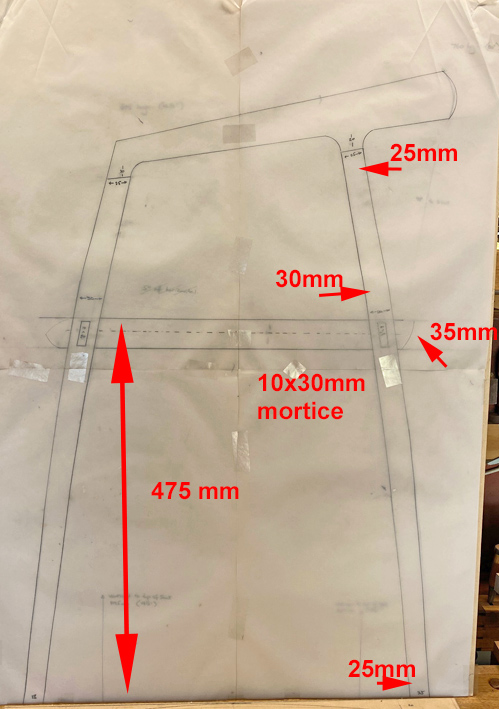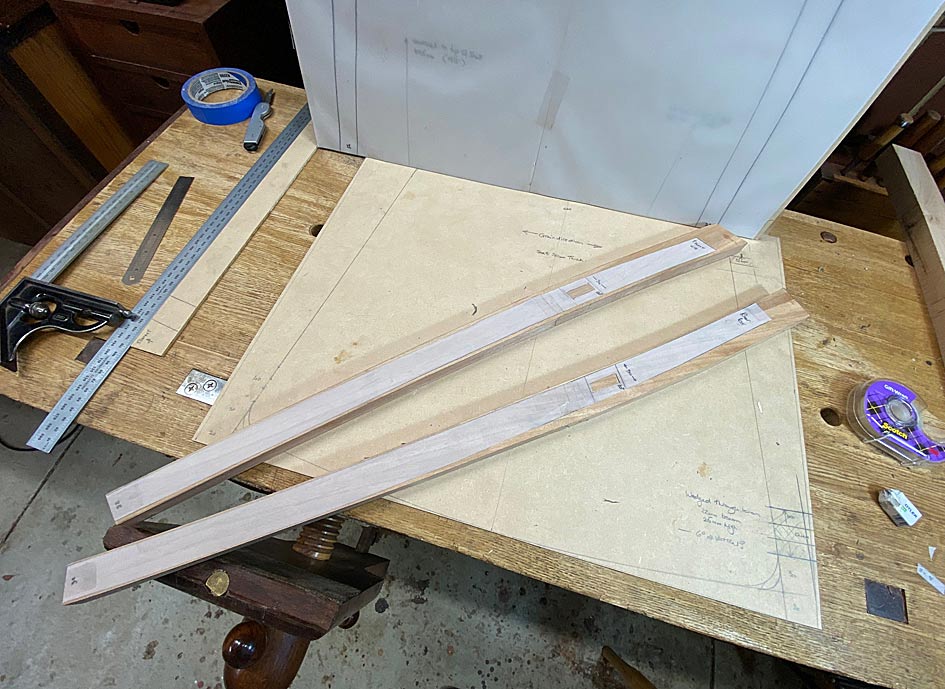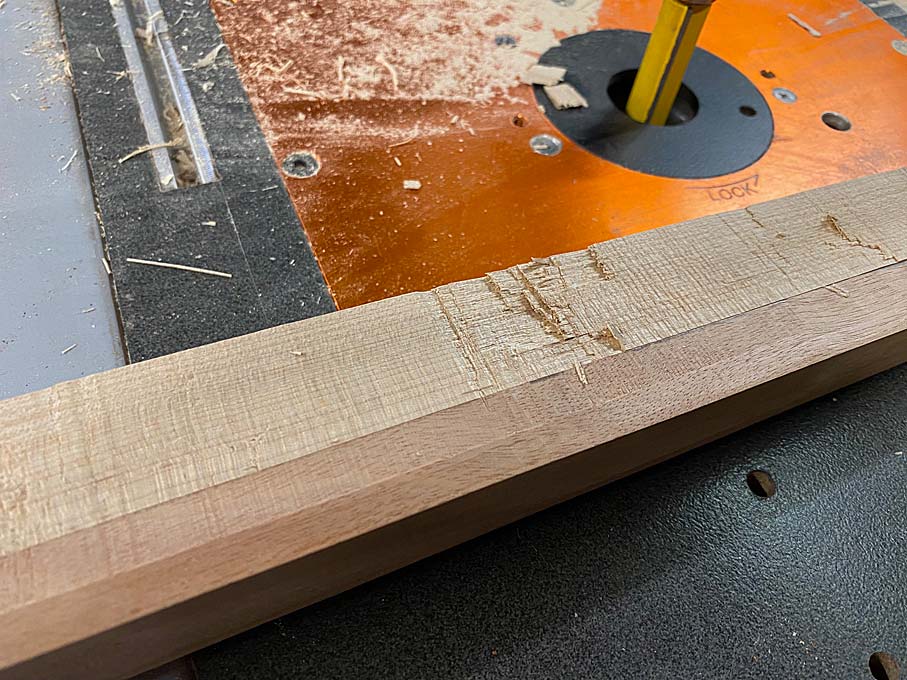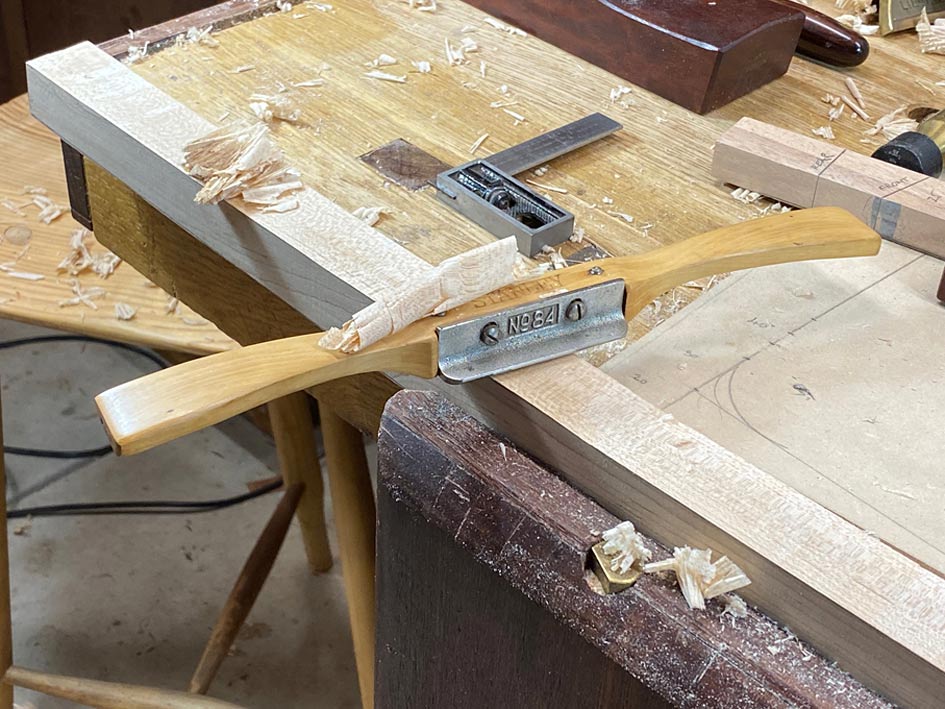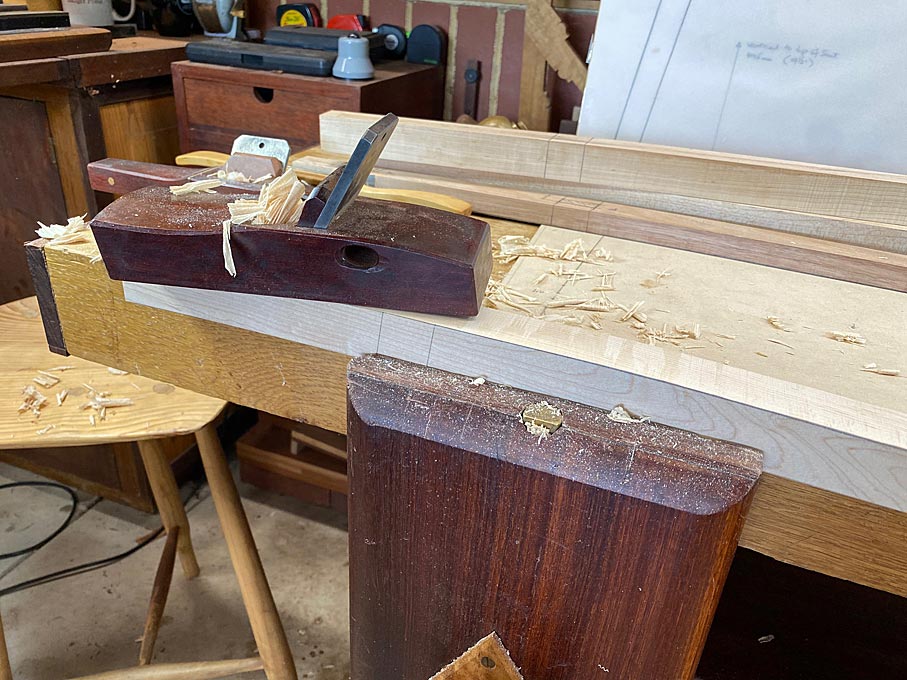Setting the parameters for chairs is a bit of a challenge and stock sizes do not fit all. My wife is 4" 10" tall and she has never been able to find a chair that was comfortable so I set out to build one. Along the way I recalled a jig I had seen many years ago in FWW #096 that made the fitting of a chair to a specific person fairly easy so it got used and definitely works. I guess I can't post any details here but it is worth a look for anyone building chairs. The specific issues my wife has is being able to sit in a chair upright against the back rest without slumping and have her feet flat on the floor, this means the length, the height and the slope of the seat has to be very specific to her. Once that is decided the height of the arms has to be resolved and different uses mean different heights. The Morris chair I built had to have the arms lower than normal because she does a huge amount of hand sewing and having them higher interferes with her arm movement. If it was used as a lounge care and nothing else the arms would be a bit higher. I built the jig, fitted it to her and she sat in it for some months while we change things to suit the person and the use it was put to.
Chris
Everything I like is either illegal, immoral or fattening





 Reply With Quote
Reply With Quote


